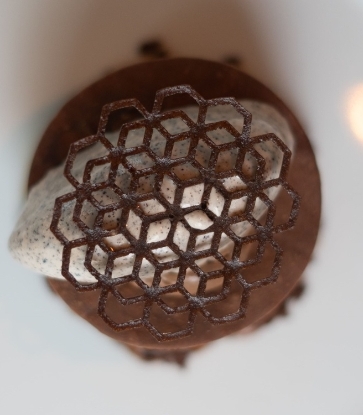This red berry is known as “red gold”, partly in reference to its nutritional and culinary qualities but also because it plays such an important role in the local economy. Serbia is in fact the world’s third largest producer of raspberries, with exports that extend way beyond the country’s borders from Europe to Malaysia and from Hong Kong to the Gulf States. This fruit (and berries in general) is one of Serbia’s most important crops, bearing witness to the positive effects of a continental climate but one with a strong Mediterranean influence. Agriculture, and fruit growing in particular, is therefore an important part of Serbian tradition and identity – it is no coincidence that this is reflected in the country’s gastronomic traditions, in which fruit often plays a starring role.
Raspberries
In Serbia, large-scale cultivation of raspberries is fairly recent (the first crops were grown in Vojvodina and the area around Svilajnac around thirty years ago) and production is now centred around Arilje, a small town in the west of the country. Cultivation has been so successful that raspberries are now grown throughout Serbia, and the country is beginning to develop a reputation for this red berry, becoming a leading player globally thanks to the superb quality of its fruit. Originally, however, the country was renowned for a different fruit, namely plums, which were exported as early as 1820 and which are now one of the main ingredients in the country’s national Sljivovica brandy.
Fragrant and full of flavour, Serbian raspberries have unique aromas which are the result of the rich and fertile soil in which they are grown, as well as the fact that they are often cultivated on small family farms where 80,000-100,000 tons are picked by hand each year. Situated amid the beautiful mountain regions of western Serbia irrigated by the Moravica, Veliki Rzav and Mali Rzav rivers, Arilje is the Serbian and worldwide capital for raspberries and boasts one of the most unspoilt and healthy environments in the whole country. This helps to explain the large number of farms in the area, as well as the high quality of the raspberries grown here, where nearly everyone is involved in raspberry cultivation.

Red berry sweets and preserves
Sweet, full of flavour and packed with vitamins, fruit grown in Serbian orchards is usually eaten fresh or used in pies and pastries, but it can also be boiled and used to make slakto preserves and jams. Slatko (which means sweet) is a Serbian preserve, the most famous of which is made from raspberries, although it can also be made with any seasonal fruit such as quince, apricots, cherries, strawberries and watermelons. Its preparation is easy and straightforward: you simply boil the fruit with water and sugar over a low heat, stirring occasionally as it cooks and making sure that the fruit remains whole. The final result should be a kind of syrup with pieces of fruit, which has a consistency that is halfway between jam and candied fruit. This preserve is a symbol of Serbian hospitality – according to an old tradition, slatko is served to guests as a sign of good health, accompanied by a glass of water and Serbian plum brandy (šljivovica) or coffee.
Other sweet treats include jams made from various Serbian fruits; raspberry and plum desserts; and apple pastries prepared with Serbian varieties such as kožara, kolačara, šumatovka, petrovača and budimka. Pita pastries are made with thin filo pastry which is then filled with grated fresh fruit and cinnamon. These crispy delicacies are a real favourite with locals and can be found in restaurants, bakeries and markets all over the country.
More exotic Serbian desserts include raspberry and pumpkin Magellan – a moist pumpkin sponge covered with raspberry jam, coated with a thin layer of white chocolate decorated with pumpkin seeds, and served with a creamy mousse.


Other fruit
However, it’s not just the country’s raspberries that have conquered local and international markets. Serbia’s fertile soil is also perfect for the cultivation of other varieties of fruit, which makes it unique from an agricultural and export perspective. In addition to fresh fruit, it also produces frozen berries, such as strawberries, with a focus on the Senga-Sengana variety (although new varieties have recently been introduced from Italy) – every year more than 40,000 tons of strawberries are harvested in Serbia. Another important fruit is the blackberry: after raspberries, blackberries are the most important fruit grown in Serbia, making the country the world’s fourth largest producer of this berry. Blackberries are grown over an area of more than 6,000 hectares which, like raspberry production, is concentrated in western Serbia. The main varieties grown are Thornfree, Čačak Thornfree and Loch Ness. Approximately 30,000 tons are cultivated every year.
The forests, meadows and clearings in the mountains of central Serbia provide the ideal environment for blueberries, the cultivation of which has seen an exponential increase in the last few years thanks to large, modern orchards equipped with state-of-the-art technology. As well as blueberries, cherry cultivation is also on the increase, boosted by a growth in exports over recent years. Cherries are grown over an area of around 14,000 hectares, which makes Serbia the third largest cherry producer in Europe. 85% of production is made up of the Oblačinska and Cigančica varieties: the first is a native variety with a distinctive flavour which is rich in antioxidants – qualities that make it one of the most attractive products on the Serbian market.
Last but not least, one of the country’s emblematic fruits is the plum. Serbia is Europe’s leading producer of plums, covering a total area of 80,000 hectares. Cultivated throughout Serbia, the main varieties grown are Stanley, Čačanska lepotica and Čačanska rodna. These are grown to be eaten fresh, but are also frozen, dried and used in different processed food products, as well as in the famous Sljivovica brandy.


Illustration image: Raspberries - silverjohn/iStock














